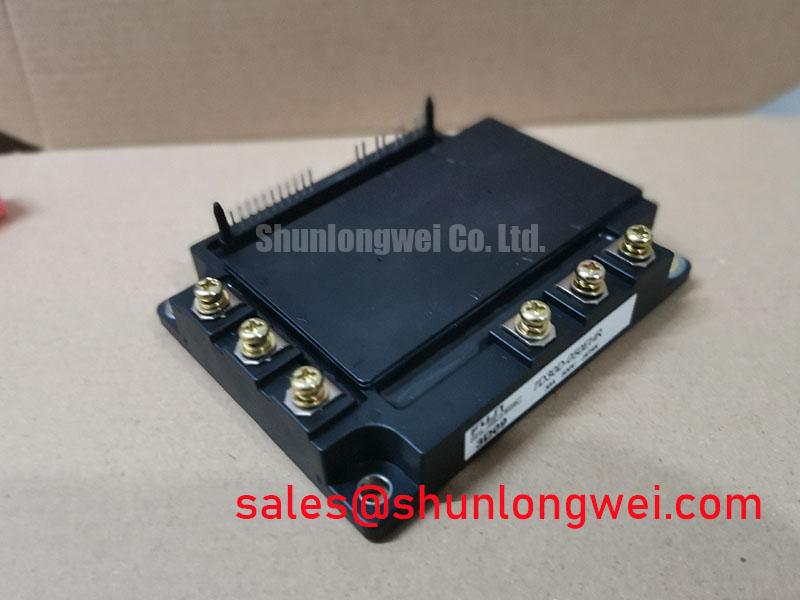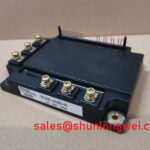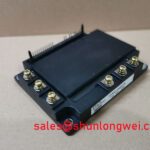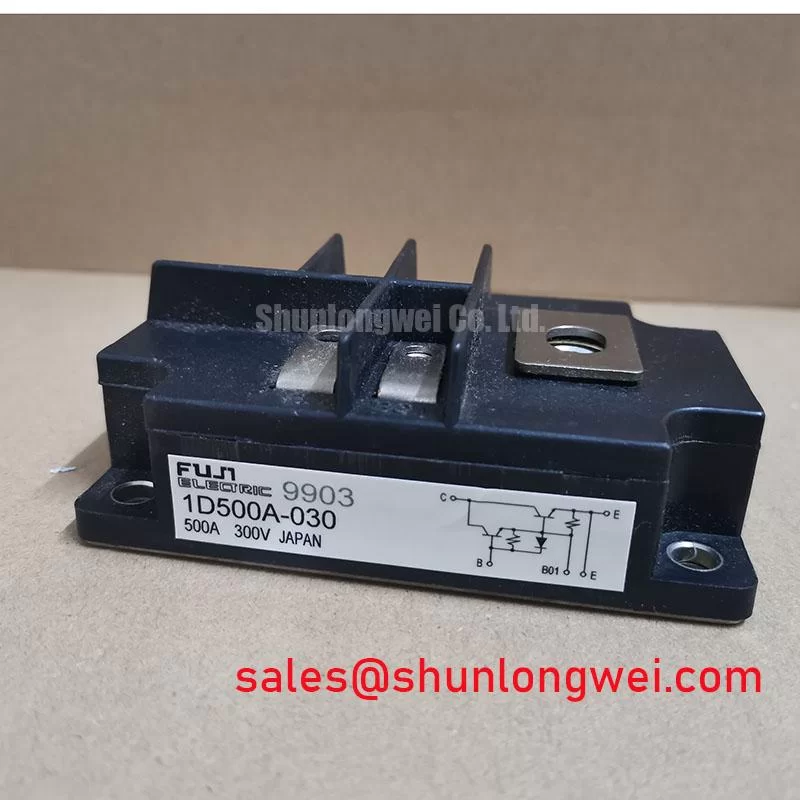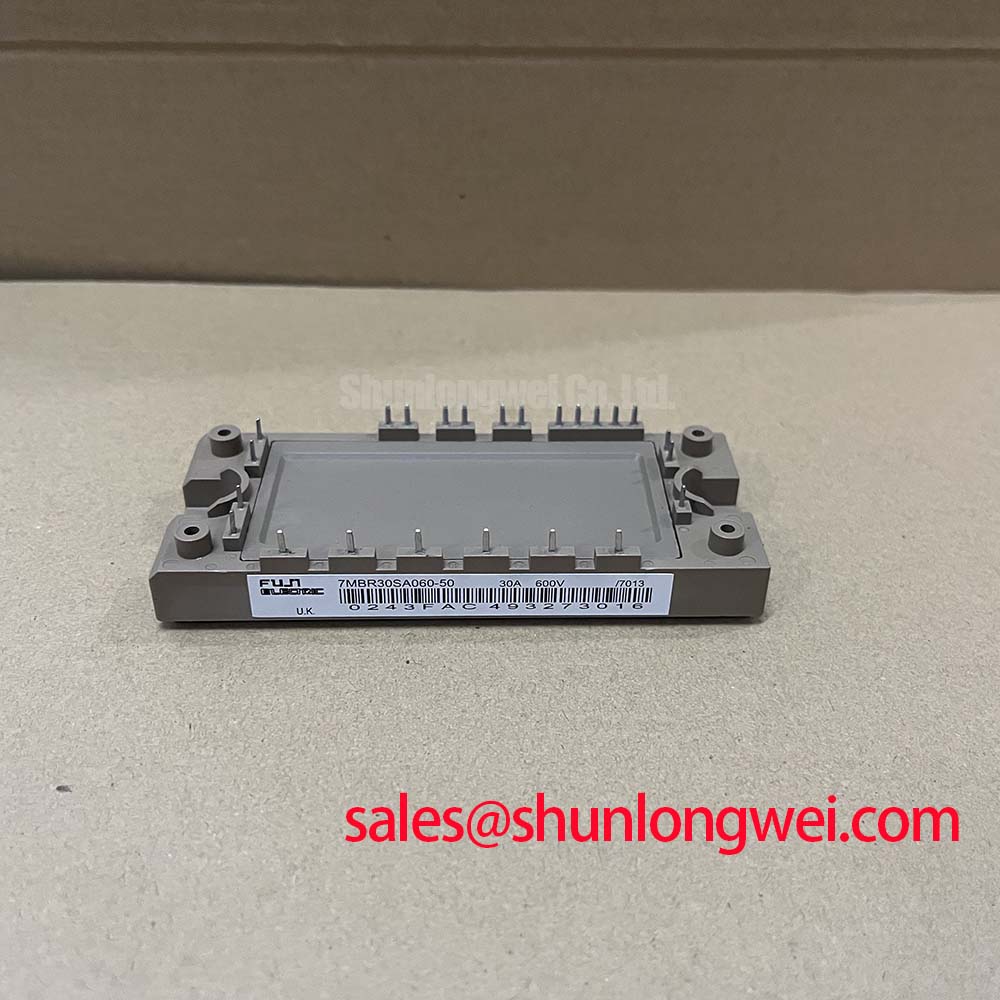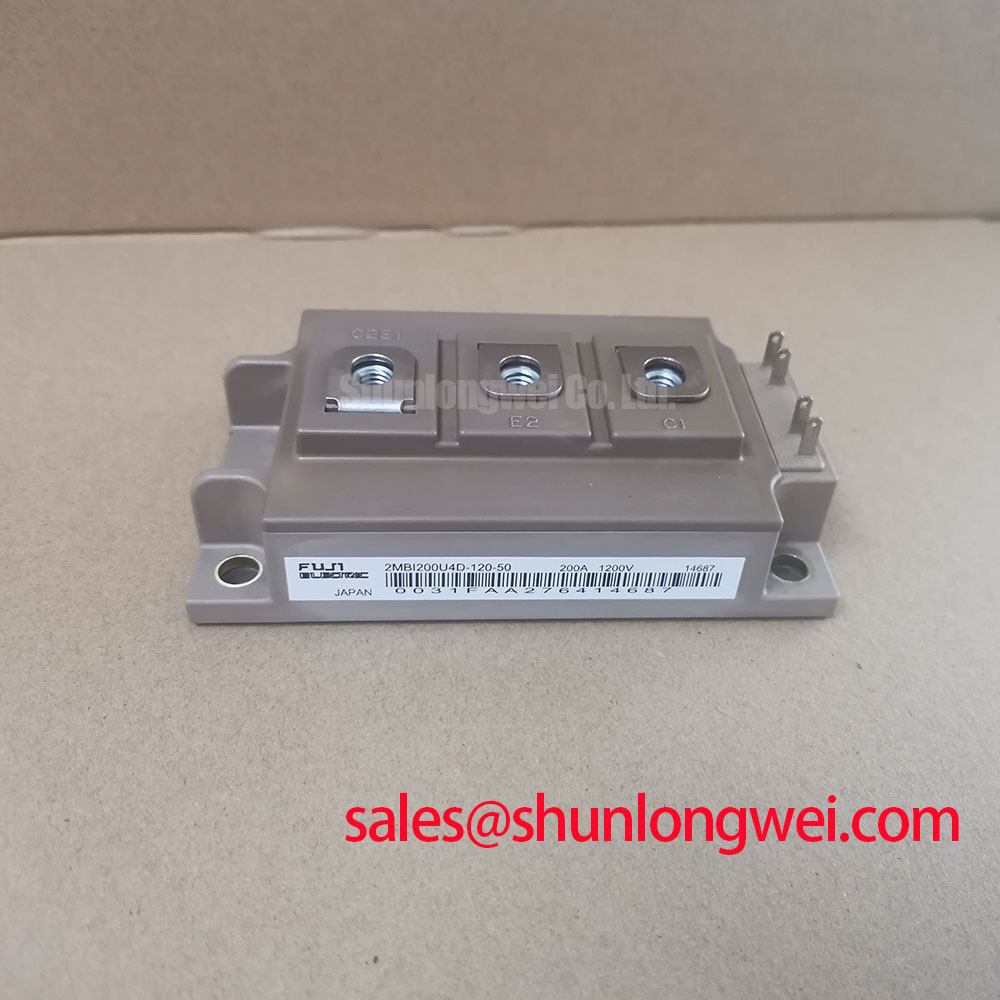Fuji 7D30D-050EHR IGBT PIM for High-Efficiency Drives
Technical Introduction to the 7D30D-050EHR PIM
The Fuji Electric 7D30D-050EHR Power Integrated Module (PIM) is engineered around 7th-generation X-Series IGBT technology to significantly reduce power losses, enabling the design of highly compact and energy-efficient motor drives. With its core specifications of 50A / 600V (Inverter) | VCE(sat) 1.55V (typ) | Tj(max) 175°C, this module offers the tangible benefits of drastically reduced power losses and the potential for higher power density. It directly addresses the engineering challenge of maximizing inverter stage efficiency by leveraging a refined chip structure that lowers both the on-state voltage drop and the energy consumed during switching cycles.
Strategic Efficiency Gains with 7th-Generation Silicon
In the competitive landscape of industrial automation, the demand for smaller, more efficient Variable Frequency Drives (VFDs) and servo systems is relentless. Global ecodesign standards, such as IEC 61800-9-2, place increasing pressure on designers to minimize energy consumption. The 7D30D-050EHR is a direct response to this trend. By integrating Fuji Electric's X-Series IGBT technology, this module provides a pathway to achieving higher efficiency classes without resorting to oversized or complex thermal management systems. This advanced silicon allows for a reduction in both conduction and switching losses, which is a fundamental requirement for developing next-generation, power-dense drive solutions. For a broader understanding of how these components are central to modern systems, explore our guide on IGBT modules as the backbone of high-efficiency power systems.
Empowering Compact and Efficient Drive Systems
The highly integrated and efficient nature of the 7D30D-050EHR makes it a strong candidate for a range of demanding applications where space and energy are at a premium. Its performance characteristics deliver specific value across different systems:
- Compact Industrial VFDs: Lower heat generation allows for smaller enclosures and heatsinks, reducing overall system size and cost.
- Robotic Servo Drives: In confined robotic arms, minimizing thermal dissipation is critical. The module’s efficiency helps maintain thermal stability and precision.
- HVAC Fan and Pump Controls: The substantial energy savings derived from reduced power losses contribute to a lower total cost of ownership in continuous-operation systems.
- General-Purpose Inverters: The all-in-one PIM structure, including a three-phase converter, inverter, and brake, simplifies the design and assembly process.
For motor drives under 22kW requiring top-tier efficiency from an integrated package, the 7D30D-050EHR's 1.55V VCE(sat) makes it a superior selection for 200-240VAC systems.
Comparative Data for Informed System Design
When evaluating power modules, engineers must consider the trade-offs between different IGBT generations and voltage classes. The 7D30D-050EHR, as a 7th-generation 600V module, provides a distinct performance profile tailored for specific applications. Unlike 1200V modules designed for 400/480VAC systems, its 600V rating is optimized for 200-240VAC input lines. This lower voltage design allows for a chip structure with significantly lower VCE(sat) and switching losses compared to its higher-voltage counterparts. For systems operating on higher voltage buses, a component like the 7MBR50SB120 would be required, but for its intended voltage class, the 7D30D-050EHR offers a clear advantage in efficiency.
A Closer Look at Loss-Reduction Mechanisms
The performance of the 7D30D-050EHR is rooted in its advanced semiconductor technology. What is the benefit of its PIM configuration? It minimizes parasitic inductance for cleaner switching waveforms and improved reliability. Two key parameters highlight its efficiency:
- Collector-Emitter Saturation Voltage (VCE(sat)): This parameter is the primary determinant of conduction losses when the IGBT is active. The module's typical VCE(sat) of 1.55V is exceptionally low, a direct result of the thinner drift layer and refined trench gate structure of the X-Series chip. This directly translates to less energy wasted as heat during operation.
- Switching Energy (Eon & Eoff): Think of switching energy as a small, fixed energy cost paid every time the device turns on or off. While insignificant individually, at PWM frequencies in the kilohertz range, these costs accumulate rapidly. The 7D30D-050EHR is engineered to minimize this "cost-per-switch," making it highly effective in applications that utilize higher switching frequencies to reduce motor noise or improve control resolution. This concept is explored further in our article about IGBT selection for high-frequency designs.
How does X-Series tech reduce losses? By optimizing the chip to lower both conduction voltage and switching energy simultaneously.
Core Specifications for the 7D30D-050EHR
This table highlights the key performance indicators for the Fuji 7D30D-050EHR, providing essential data for system design and evaluation. For complete details, reference the official product datasheet.
| Parameter | Value |
|---|---|
| Collector-Emitter Voltage (Vces) - Inverter | 600 V |
| Collector Current (Ic) - Inverter | 50 A |
| Collector-Emitter Saturation Voltage (VCE(sat)) Typ. @ Ic=50A | 1.55 V |
| Maximum Junction Temperature (Tj max) | 175 °C |
| Total Power Dissipation (Pc) - Inverter 1-Element | 260 W |
| Diode Forward Voltage (Vf) Typ. @ If=50A | 1.70 V |
Technical Inquiries for the 7D30D-050EHR
How do the losses of the 7D30D-050EHR behave at higher switching frequencies?
Thanks to its low Eon and Eoff values, the 7D30D-050EHR maintains high efficiency even as switching frequencies increase. While switching losses will inevitably rise with frequency, their contribution to total losses is smaller compared to older IGBT generations, allowing designers to push frequencies higher (e.g., to 10-15 kHz) to reduce audible noise without incurring a severe thermal penalty.
What is the role of the integrated brake chopper in this PIM?
The integrated brake chopper (a single IGBT with a parallel free-wheeling diode) provides a simple and effective way to manage regenerative energy. When a motor decelerates, it acts as a generator, sending energy back to the DC bus. The brake chopper dissipates this excess energy through an external braking resistor, preventing DC bus overvoltage faults and ensuring controlled, rapid stopping.
Given the 175°C max junction temperature, what is a practical thermal design consideration?
While the high Tj max rating provides a significant thermal margin, it is not a license to neglect proper thermal management. The key is to leverage this margin for reliability and power density. A practical approach is to design the heatsink to maintain a junction temperature well below the maximum limit during normal operation (e.g., 125-150°C). This enhances the module's lifetime, improves its power cycling capability, and provides headroom to handle overload conditions without immediate failure.
Designing for Future Energy Standards
Selecting a power module like the Fuji 7D30D-050EHR is a strategic decision that extends beyond meeting current project specifications. Its foundation in 7th-generation silicon provides the efficiency headroom needed to future-proof designs against increasingly stringent energy regulations. By integrating a component engineered for minimal power loss, engineering teams can develop more competitive, sustainable, and compact industrial automation solutions that align with the long-term market trajectory toward electrification and energy conservation.


